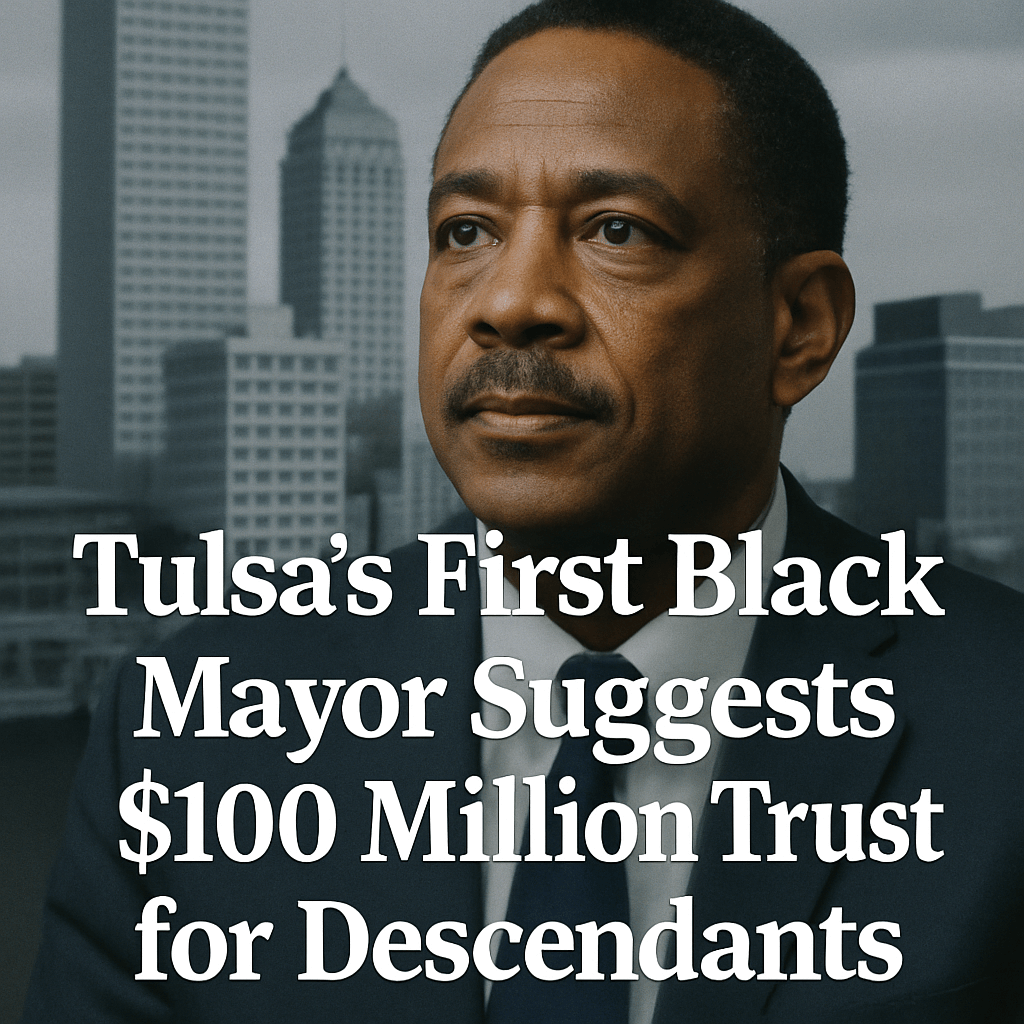Tulsa’s First Black Mayor Suggests $100 Million Trust for Descendants

Tulsa’s new mayor, Monroe Nichols, unveiled a comprehensive reparations strategy on Sunday, proposing a $100 million private trust designed to assist the descendants of those affected by the 1921 Tulsa Race Massacre. This plan aims to provide scholarships and housing support as part of a broader effort to address historical injustices stemming from one of the darkest chapters in U.S. history.
Context of the 1921 Tulsa Race Massacre
On June 1, 1921, a violent mob of white residents attacked the prosperous Black community of Greenwood, often referred to as “Black Wall Street,” leading to the deaths of as many as 300 Black individuals and the destruction of approximately 1,000 homes and businesses. The scale of this massacre and its lasting impact have only recently begun to receive the recognition they deserve in history books and public discourse, partially thanks to renewed civic engagement and activism.
Mayor Nichol’s Reparations Plan
Mayor Monroe Nichols characterized his proposal not as a direct reparations initiative, but rather a “road to repair,” avoiding the politically charged term ‘reparations.’ During his announcement at the Greenwood Cultural Center, he emphasized that the plan is aimed at addressing historical grievances caused by systemic neglect that included redlining and lack of government investment in the area.
Nichols stated, “For 104 years, the Tulsa Race Massacre has been a stain on our city’s history. The massacre was followed by intentional acts of redlining and economic deprivation—now it’s time to take the next big steps to restore.” The proposal encompasses the establishment of a private trust with a target asset goal of $105 million, aiming for most of the funding to be secured by June 1, 2026.
Utilization of Trust Fund Assets
Of the fund’s total amount, a significant $60 million is earmarked for revitalizing properties and infrastructure on Tulsa’s north side. This rejuvenation is expected to facilitate not only the recovery of Greenwood’s former commercial glory but also to stimulate economic prospects that could benefit the entire city. “The Greenwood District at its height was a center of commerce,” Nichols pointed out, emphasizing that restoring this area is vital for the economic future of Tulsa as a whole.
Political Landscape and Community Reaction
The political climate surrounding this initiative is complex. Nichols acknowledged that current national discussions on diversity, equity, and inclusion might complicate perceptions of the plan, especially amid critiques of such programs from various political figures, including former President Trump. Nonetheless, Nichols has committed to pursuing this initiative regardless of political headwinds.
Responses from community members have been varied. Jacqueline Weary, whose grandfather endured the massacre, highlighted frustrations regarding how the violence impacted generational wealth. “If Greenwood was still there, my grandfather would still have his hotel. It rightfully was our inheritance, and it was literally taken away,” she stated. This sentiment reflects broader concerns over the economic disparities that persist today.
Comparative Analysis of Reparations Initiatives
Tulsa’s efforts are not isolated; they are part of a growing trend among U.S. cities considering reparative measures. For example, Evanston, Illinois, has initiated a reparations program funded by taxes on recreational marijuana sales, offering households $25,000 for housing stability. Other cities exploring similar avenues include Amherst, Massachusetts; Providence, Rhode Island; and Asheville, North Carolina, demonstrating a coordinated effort to address historical injustices at local levels.
Nevertheless, critics of reparations often cite the difficulties in quantifying historical losses and establishing fair mechanisms for redress. Damario Solomon-Simmons, an attorney representing the two remaining survivors of the Tulsa massacre, has been vocal in advocating for direct financial compensation to the survivors alongside broader reparations initiatives.
Conclusion
As Tulsa moves forward with this innovative plan, questions remain about its implementation and effectiveness. The establishment of the private trust represents a significant step towards acknowledging and addressing the historical grievances borne from the Tulsa Race Massacre. However, it remains critical for local leadership to engage with stakeholders-driven discussions to ensure inclusivity and efficacy in the proposed initiatives.
Ultimately, the success of the reparations package may hinge not only on financial commitments but also on a sincere commitment to historic acknowledgment and community restoration. Continuing to bring this dialogue into the public sphere may catalyze broader reform beyond Tulsa’s borders.
“The restoration of Greenwood isn’t just about righting historical wrongs; it’s about revitalizing a community and its economic future.” – Monroe Nichols
Source: fortune